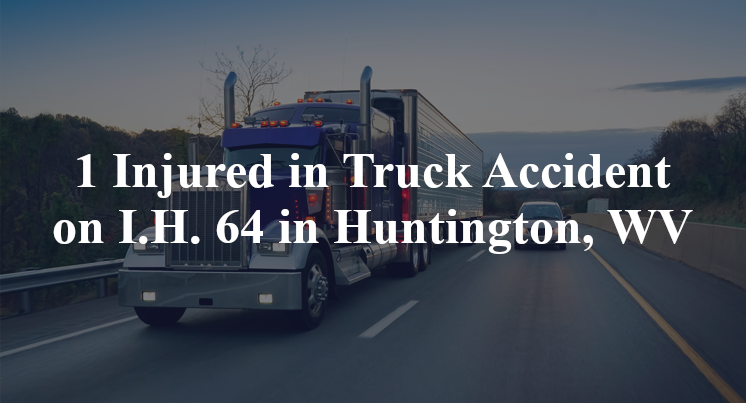1 Injured in Truck Accident on I.H. 64 in Huntington, WV
Cabell County, WV — April 15, 2025, one person was injured following a truck accident at approximately 6:00 a.m. along Interstate Highway 64.
According to authorities, the accident took place in the westbound lanes of I.H. 64 in the vicinity of the U.S. Highway 52 interchange.

Details surrounding the accident remain scarce. Preliminary reports state that, for as yet unknown reasons, a collision took place between an 18-wheeler and a passenger vehicle. One person reportedly suffered injuries of unknown severity over the course of the accident and was transported to a local medical facility by EMS in order to receive necessary treatment. Additional information pertaining to this incident—including the identity of the victim—is not available at this point in time. The investigation is currently ongoing.
Commentary
In my experience, early-morning crashes involving passenger vehicles and 18-wheelers often have more behind them than a simple error in judgment. When a collision happens at 6:00 a.m. on a major highway like I-64, the conditions involved—limited daylight, potential driver fatigue, and early commute traffic—can all play a role. And when one of those vehicles is a commercial truck, the stakes are even higher.
At this stage, the details are still limited, but one question stands out: how were both vehicles being operated leading up to the collision? Was the truck merging, changing lanes, or stopped due to traffic? Was the passenger vehicle navigating around it or caught in a blind spot? These questions are critical because in my experience, rear-end and side-impact collisions between cars and 18-wheelers frequently involve visibility and spacing issues. A driver in a smaller vehicle might not be seen in time—or may not be given enough space to react safely.
If the 18-wheeler was under the direction of a commercial carrier, that also raises questions about the company’s role. Was the driver rested, alert, and operating within their hours-of-service limits? Was the truck properly maintained, particularly in terms of braking and lighting systems—both of which are essential during low-light hours? And was the company putting pressure on the driver to meet a deadline that may have influenced how cautiously they drove?
Even if the truck wasn’t directly at fault, the presence of a commercial vehicle in any crash brings with it a higher level of responsibility. These vehicles are capable of causing far more damage than passenger cars, which is why the law—and common sense—expect more from the people and companies who operate them.
From where I sit, this kind of crash needs more than a passing look at who collided with whom. It requires a careful investigation into how the vehicles were being used, what the drivers were doing in the moments before the crash, and whether either one had a reasonable opportunity to prevent the outcome. Only by answering those questions can the right parties be held accountable and those affected by the wreck receive the clarity and closure they deserve.

“These are essential reads for anyone dealing with the aftermath of a truck wreck”– Attorney Cory Carlson